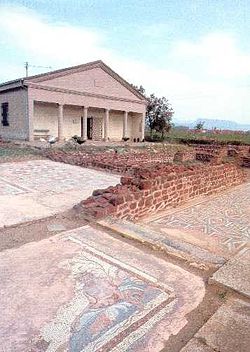This article needs additional citations for verification. (October 2011) |










Much of the territory of the modern state of Serbia was part of the Roman Empire and later the Eastern Roman Empire. In particular, the region of Central Serbia was under Roman rule for about 800 years (with interruptions), starting from the 1st century BC, interrupted by the arrival of the Slavs into the Balkans during the 6th century, but continued after fall of the First Bulgarian Empire in the early 11th century and permanently ended with the rise of the Second Bulgarian Empire in the late 12th century. The territories were administratively divided into the provinces of Moesia (later Moesia Superior), Pannonia (later Pannonia Inferior) and Dardania. Moesia Superior roughly corresponds to modern Serbia proper; Pannonia Inferior included the eastern part of Serbia proper; Dardania included the western part of Serbia proper. After its reconquest from the Bulgarians by Emperor Basil II in 1018, it was reorganized into the Theme of Bulgaria.
The Danube River influenced the extension of the Roman Empire; its confluents, such as Sava and Morava, affected the growth of frontier fortresses and towns. Many authors and explorers[by whom?] wrote about traces of the Roman Empire on the Danube coast. One of the localities, Felix Romuliana, was ranked on the list of cultural heritage of UNESCO in July 2007.
The location has been invaded by many peoples over the centuries. The northern Serbian city of Sirmium (Sremska Mitrovica) was among the top 4 cities of the late Roman Empire, serving as its capital during the Tetrarchy.[1] Contemporary Serbia comprises the classical regions of Moesia, Pannonia, parts of Dalmatia, Dacia and Macedonia.
- ^ Andrić, Stanko (October 2002). "Southern Pannonia during the age of the Great Migrations". Scrinia Slavonica. 2 (1). Slavonski Brod, Croatia: Croatian Historical Institute - Department of History of Slavonia, Srijem and Baranja. ISSN 1332-4853. Retrieved 27 February 2012.
© MMXXIII Rich X Search. We shall prevail. All rights reserved. Rich X Search
